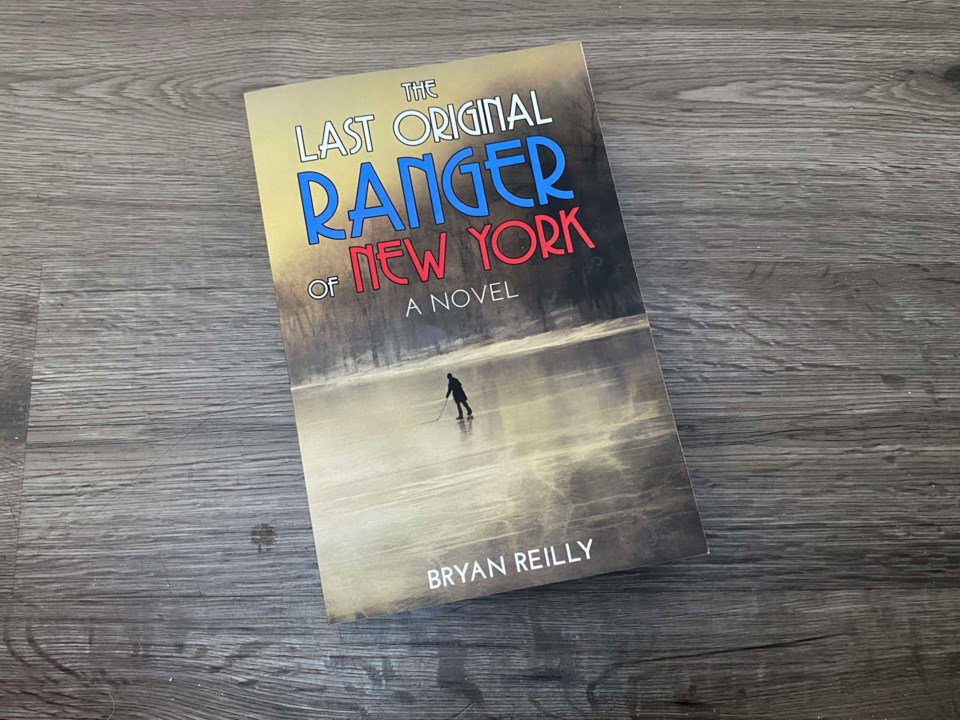YORKTON - When you write sports columns rare is the opportunity to touch on anything fictional, but there are occasions it is possible.
The Last Original Ranger of New York, an indie release by author Bryan Reilly is one such case.
The book reflects back on the birth of the NHL’s New York Rangers in 1926, through the eyes of rookie Murray Murdoch’s – an actual player.
Therein lies the core aspect of this book – the players are all the actual Rangers on the team. That’s rather interesting from a Prairie perspective. For example while Murdoch was born in Ontario he was raised at Edgerton, Alta. He went on to receive a Bachelor’s degree in mathematics from the University of Manitoba where he played hockey for the Manitoba Bisons from 1921 to 1924. The Bisons won four consecutive Turnbull Cup Provincial Junior Championships, and in 1923, with Murdoch as captain, also won the Abbott Cup (Western Canada), Memorial Cup and Allan Cup for amateur hockey national titles, and were inducted into the Manitoba Sports Hall of Fame and Museum as a team in 2004, according to Wikipedia.
Bill and Frederick (Bunny) Cook were on the team too. Both were born in Ontario but have ties to Saskatchewan having farmed at Lac Vert.
Bill Cook played for the Saskatoon Crescents of the Western Canada Hockey League (WCHL) in addition to the Rangers. A prolific scorer, Cook led the WCHL in goals twice and the NHL three times. He was named an all-star seven times between the two leagues. Known as “The Original Ranger”, Cook was the first captain of the New York Rangers, scored the first goal in franchise history and led the team to two Stanley Cup championships.
Bunny too turned professional by signing with the Saskatoon Crescents for the 1924–25 season.
So reading of the trio with the Rangers was interesting for the connection, but as a reader you are not sure where the line between fact and fiction lies in a book like this.
Author Reilly was quick to explain via telephone interview that the coverage of actual games was as factual as possible.
“My rule was anything I wrote about relating to a game was all a 100 per cent factual account,” he said, adding being true to that statement was a challenge. “Finding information from 1926 was just painstaking.”
Reilly said since the Rangers were new, professional hockey itself only two years in New York – the Americans were there a season earlier – meant media coverage was often scant.
So who scored, who assisted, who went to the sin bin, were there but no details.
That is where Reilly turned to fiction. As a former player, he said he tried to envision scoring plays and bring those to life in a reasonable way.
“If Bill Cook scored a goal . . . How he scored the goal was kind of my imagination – my embellishment to describe the play,” he said.
The goals – in fact the entire season – were told “from the perspective of a player” he said, adding he chose Murdoch in part because he had a university degree which was rather unique, because he had a connection to future Ranger Mark Messier, because Murdoch would be the last surviving original Ranger, and that he was an iron man, never missing a game in his career in NY.
Murdoch died on May 17, 2001, in Georgetown, South Carolina, at age 96.
Messier who makes sort of ‘cameo’ appearances throughout the book, and he meets Murdoch for a pond skate in 1994 is related by marriage through Murray Murdoch’s wife, Marie Heinrich.
It is an important aspect of the book as “On June 14, 1994, Murray watched as Mark Messier and the Rangers hoisted Lord Stanley’s Cup, the most glorious trophy in professional sports.
It was the team’s first championship in 54 years.
What was surprising is most of what was off the ice – the non-game aspects – are fictional, including Marie who Reilly noted was fictional in all but name – one of two main characters he ‘fully created.”
Now in truth the season long grind of game reports was a tad more than this reader enjoyed – not fully being a Ranger fan didn’t help on this count – but I understood the reason Reilly included the factual detail.
For Ranger fans this should be required reading as it sheds insights on the team’s earliest roots, players even Reilly admits he knew little about as he began research for the book.
Now as the 100th anniversary of the Rangers nears, Reilly questions why this team remains so anonymous. As he notes in the Epilogue none have banners hanging in Madison Square Garden. Nor have they had their numbers retired, as the franchise does for their former greats. He hopes in some fashion the book sheds light on what he sees an oversight which needs to be corrected.
Original Rangers Bill Cook, Frank Boucher, Bunny Cook, Ching Johnson, and Lester Patrick were all inducted in the Hockey Hall of Fame. They, and Murray Murdoch, all won two or more Stanley Cups for the Rangers. Taffy Abel was inducted into the United States Hockey Hall of Fame. Today he is recognized as the first Native American to become a NHL regular with the New York Rangers.






